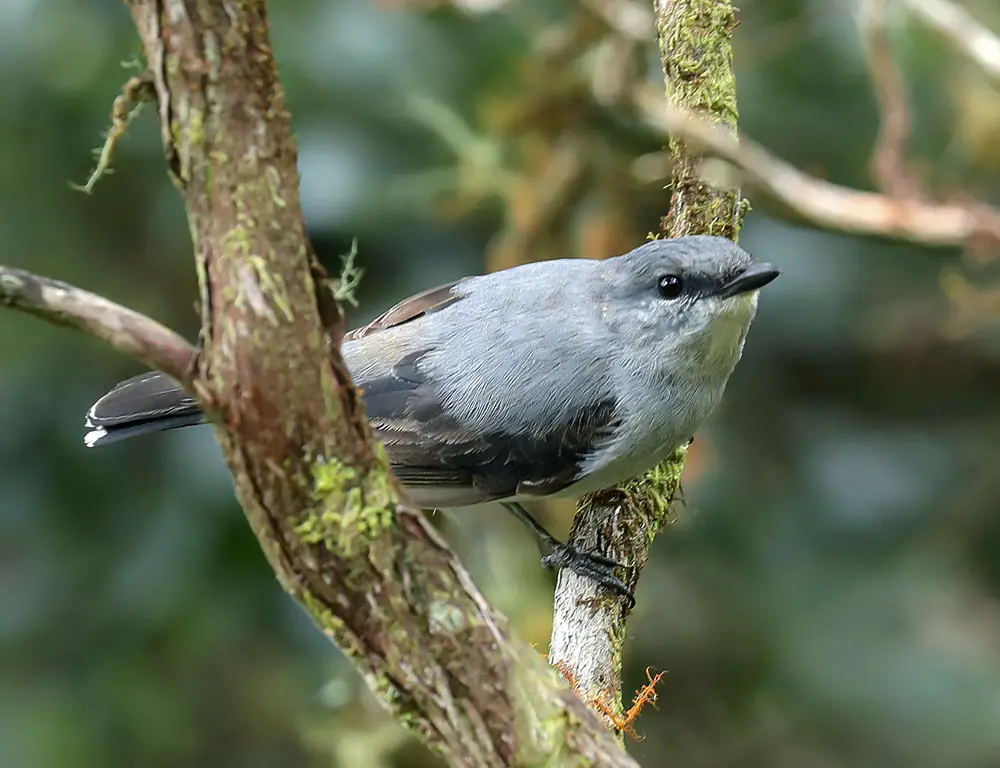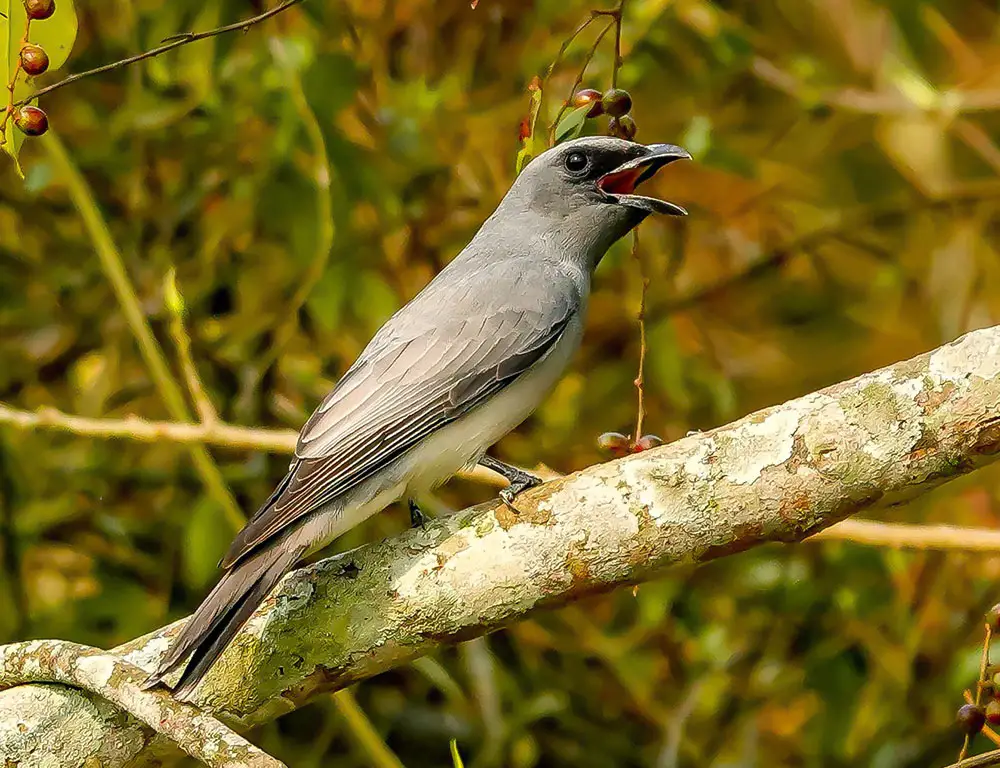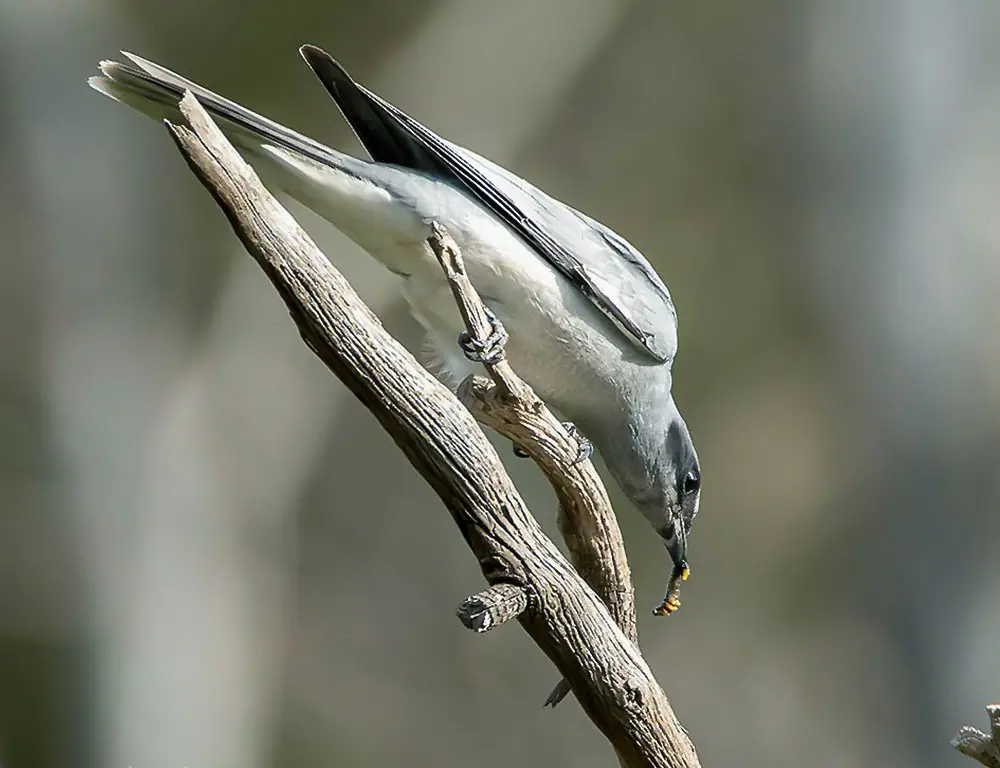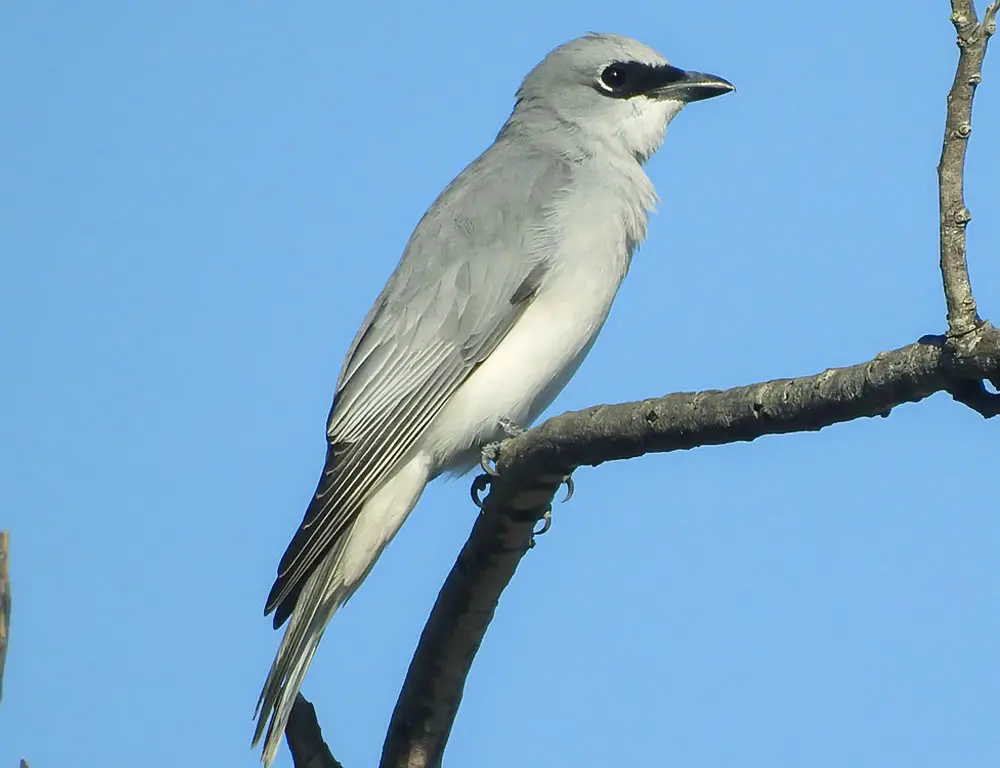Bird enthusiasts often find themselves captivated by the diverse avian species, and cuckooshrikes are no exception.
While not as well-known as sparrows or hummingbirds, these birds native to Asia and Australasia possess a distinct allure.
Belonging to the Campephagidae family, cuckooshrikes defy their name’s expectations, bearing neither the characteristics of cuckoos nor shrikes. Instead, their feeding habits and calls lend them a unique identity.
With sizes varying from small to medium, coupled with distinctive plumage patterns, cuckooshrikes exude charm.
Delving deeper into their world reveals insights into habitat preferences, behavioral traits, dietary habits, and conservation status.
Join us on a journey to unravel the mysteries of these intriguing creatures and appreciate their adaptations to diverse geographical regions.

Habitat and Distribution of the Cuckooshrike
The habitat and distribution of cuckooshrikes, as described in your text, illustrate their adaptability to various ecosystems and their broad geographic range.
Here’s a summary:
Preferred Habitats
Cuckooshrikes are found in diverse forested habitats, including mangroves, rainforests, eucalyptus groves, and woodlands. They thrive in areas with dense foliage where insects, their primary food source, are abundant.
Some species, like the Grey-headed Cuckooshrike, also inhabit savannah woodlands, while others have adapted to cultivated areas and suburban gardens.
Geographical Distribution
The geographical distribution of the bar-bellied cuckooshrike (Coracina striata) spans across several countries in Southeast Asia, namely Thailand, Malaysia, Indonesia, and the Philippines.
This bird species inhabits a variety of natural habitats within these regions, including mangrove forests, dry forests, swamp forests, and secondary forests.
In Thailand, the bar-bellied cuckooshrike can be found in different parts of the country, ranging from lowland areas to higher elevations.
It inhabits various types of forests, including both primary and secondary growth forests, making it relatively adaptable to different environmental conditions within the Thai landscape.
Similarly, in Malaysia, the distribution of this cuckooshrike species extends across the country’s diverse ecosystems.
It can be observed in mangrove areas along the coastlines, as well as in inland forests, including both tropical rainforests and drier forest types.
Indonesia, with its vast archipelago, offers a wide range of habitats for the bar-bellied cuckooshrike.
This species can be found in various parts of the Indonesian islands, from Sumatra and Java to Sulawesi and beyond. It inhabits mangrove forests in coastal regions, as well as diverse forest types found throughout the country’s islands.
In the Philippines, the bar-bellied cuckooshrike is also present, particularly in forested areas across different islands.
It can be spotted in both primary and secondary forests, demonstrating its ability to adapt to various degrees of habitat disturbance.
Taxonomic Name
Despite their name, cuckooshrikes are not closely related to either cuckoos or shrikes. The name “cuckooshrike” is derived from their cuckoo-like flight pattern and shrike-like beak shape.
Physical Characteristics of the Cuckooshrike

Cuckooshrikes, members of the Campephagidae family, exhibit various physical characteristics that make them unique and fascinating birds.
Here’s an overview of their physical traits:
Size
Cuckooshrikes vary in size, with species ranging from small to medium-sized birds.
The length of cuckooshrikes typically ranges from about 7.5 inches (19 centimeters) in smaller species like the Small Minivet (Pericrocotus cinnamomeus) to around 18 inches (45 centimeters) in larger species like the Ground Cuckooshrike (Coracina maxima).
Plumage
The plumage of cuckooshrikes can vary greatly between species and even within species. While some species have relatively plain or subdued colors like grey, black, and white, others exhibit more hues such as blue, green, yellow, or orange.
These colors may be used for camouflage, mate attraction, or species recognition.
Beak
Cuckooshrikes typically have short, stout bills with a slight hook at the tip. This beak shape is well-adapted for their insectivorous diet, allowing them to catch and consume a variety of insects.
The size and shape of the bill may vary slightly between species depending on their specific feeding habits and ecological niche.
Wings and Tail
Cuckooshrikes have relatively broad wings and a rounded tail, which aids them in agile flight maneuvers as they navigate through their forested habitats. Their flight is often characterized by quick, darting movements as they chase after insects or move between trees.
Sexual Dimorphism
In some cuckooshrike species, there may be differences in appearance between males and females, known as sexual dimorphism.
These differences can include variations in plumage coloration, with males typically exhibiting brighter or more distinct colors than females. Sexual dimorphism may also extend to size or other physical traits.
Behavior and Diet of the Cuckooshrike

The behavior and diet of cuckooshrikes are fascinating aspects of their biology that contribute to their ecological role and survival strategies.
Let’s explore these aspects in more detail:
Feeding Habits
- Insectivorous Diet: Cuckooshrikes are primarily insectivores, meaning they primarily feed on insects. Their diet includes insects such as beetles, caterpillars, grasshoppers, and flies. They are skilled hunters, using their sharp beaks and agile flight to capture prey.
- Foraging Techniques: Cuckooshrikes employ various foraging techniques to locate and capture insects.
They may search through foliage, hover mid-air to catch flying insects, or glean prey from branches and leaves. Their keen eyesight and quick reflexes enable them to detect and capture prey precisely. - Occasional Fruit Consumption: While insects form most of their diet, cuckooshrikes may also consume fruits, berries, and other plant materials opportunistically. This dietary flexibility allows them to supplement their food intake, especially when insect prey is scarce.
Behavior
- Social Structure: Cuckooshrikes exhibit diverse social behaviors, ranging from solitary individuals to cohesive family groups or flocks. Some species are more solitary and territorial, while others form loose associations or forage cooperatively with other birds.
- Breeding Behavior: During the breeding season, cuckooshrikes engage in courtship rituals to attract mates.
Males may perform elaborate displays, such as aerial acrobatics or vocalizations, to court females. Once pairs form, they engage in cooperative nesting and chick-rearing duties. - Territoriality: Cuckooshrikes may defend territories during the breeding season, using vocalizations and displays to deter intruders. Territory size and defense strategies can vary depending on resource availability and population density.
- Migration: While some cuckooshrike species are sedentary residents in their habitats year-round, others undertake seasonal migrations to breeding or wintering grounds. Migration patterns vary among species and populations, with some individuals traveling long distances to reach suitable habitats.
Conservation Status of the Cuckooshrike

The conservation status of cuckooshrikes varies among species, with most being classified as “least concern” by the International Union for Conservation of Nature (IUCN).
However, several factors contribute to the conservation concerns for certain cuckooshrike species:
Endangered Species
Some cuckooshrike species, such as the Mauritius Cuckooshrike and Reunion Cuckooshrike, are classified as “endangered” due to rapid habitat loss and fragmentation.
These species are endemic to specific islands and face significant threats from deforestation, invasive species, and other human activities.
Data Deficiency
For some cuckooshrike species, such as the Small Minivet and Halmahera Cicadabird, there is a lack of scientific information available to assess their conservation status accurately.
This data deficiency could potentially put these species at risk if threats are not identified and addressed in time.
Conservation Efforts
Conservation efforts for cuckooshrikes focus on protecting remaining habitats, particularly in regions where endangered species reside.
This includes measures to mitigate habitat loss and degradation, control invasive species, and raise awareness about the importance of conserving cuckooshrike populations.
Ecosystem Function
Cuckooshrikes play an important role in maintaining ecosystem health by controlling insect populations. As insect-eaters, they help regulate pest populations, which has ecological and economic benefits for humans and other species.
Conclusion
The cuckooshrike emerges as a fascinating avian species, rich in diversity and ecological significance. Despite their relative obscurity compared to other bird families, cuckooshrikes captivate enthusiasts with their unique characteristics and behaviors.
From their adaptable habitat preferences spanning across Asia and Australasia to their varied physical traits and foraging techniques, these birds exemplify nature’s ingenuity.
While most cuckooshrike species are classified as “least concern” regarding their conservation status, the plight of endangered species underscores the urgent need for habitat protection and conservation efforts.
Through research, awareness, and targeted conservation initiatives, we can safeguard cuckooshrikes and their ecosystems, ensuring their continued presence in the natural world.
Their role in insect control highlights their importance in maintaining ecological balance, serving as a reminder of the interconnectedness of all species within our global environment.